Radio waves from a distant galaxy were blocked from view by an asteroid in our Solar System. However, in a process called diffraction, waves bent around the asteroid and interacted to form a pattern of bright and dark circles. Astronomers analyzed this pattern to learn new details about the asteroid’s. size, shape, and orbit.
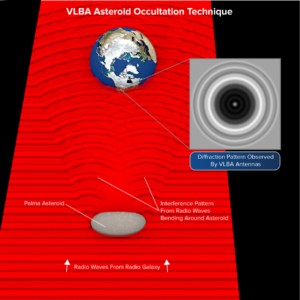
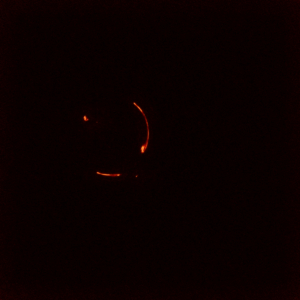
VLBI Network of Telescopes Bring Astronomers Closer to Understanding Dark Matter
Gravitational lensing allows astronomers to observe incredibly distant radio sources that cannot be directly detected. By observing how the radio emission from the distant source is bent by the gravitational field of a massive object – the lens – located between the source and the Earth, it is possible to determine information about both the distant source and the lens. In this study, the researchers used the radio source MG J0751+2716, at such great a distance that it has taken the light 11.7 billion years to reach the Earth. This object is comprised of a black hole with a powerful ejection of material, known as a jet. The lens consists of a group of galaxies located 3.9 billion light-years from Earth.
The image was created by combining data from a global network of radio telescopes, including the continental Very Long Baseline Array (VLBA), European VLBI Network and Green Bank Telescope in West Virginia United, in an effort to address some of the fundamental questions about dark matter. The international team of astronomers aim to determine how much dark matter is present in galaxies and how it is distributed. According to current theories, a galaxy, such as our Milky Way, should have thousands of dwarf galaxies orbiting around it, yet to date only approximately 100 have been found.
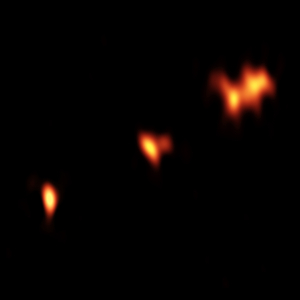
Distant Quasar Providing Clues to Early-Universe Conditions
VLBA image of the quasar P352–15, at a distance of nearly 13 billion light-years from Earth. Three main components of the object are seen, with two of them showing further substructure.
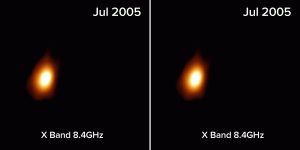
Astronomers See Distant Eruption as Black Hole Destroys Star
For the first time, astronomers have directly imaged the formation and expansion of a fast-moving jet of material ejected when the powerful gravity of a supermassive black hole ripped apart a star that wandered too close to the cosmic monster. This animated gif shows the expansion the of radio-emitting region where the star was shredded by the supermassive black hole. The expansion indicates a jet of particles moving outward.
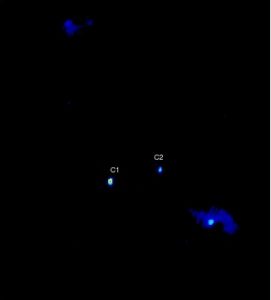
VLBA Reveals First-Ever Black Hole “Visual Binary”
VLBA image of the central region of the galaxy 0402+379, showing the two cores, labeled C1 and C2, identified as a pair of supermassive black holes in orbit around each other.
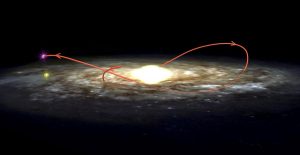
Tracking a Black Hole
Orbital path (red line) of black hole XTE J1118+480 and its companion through the Milky Way Galaxy over the past 230 million years. Yellow circle indicates the Sun’s current position.

